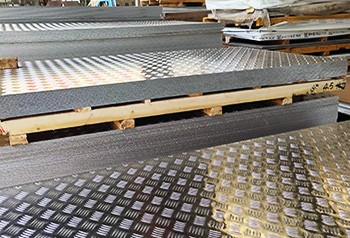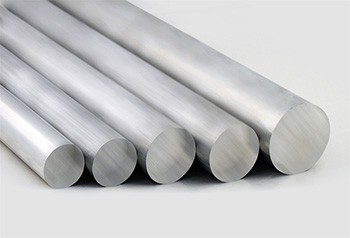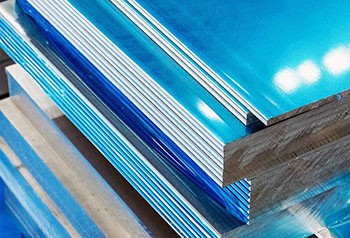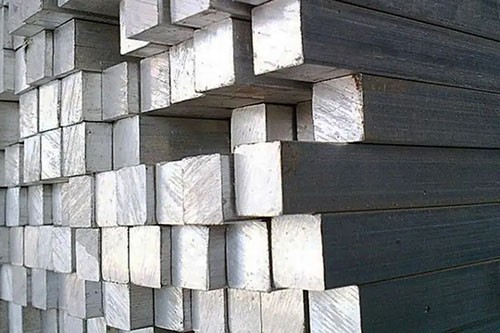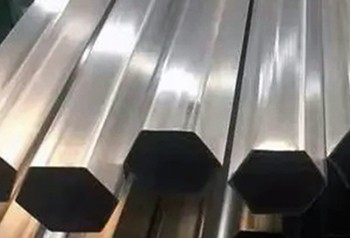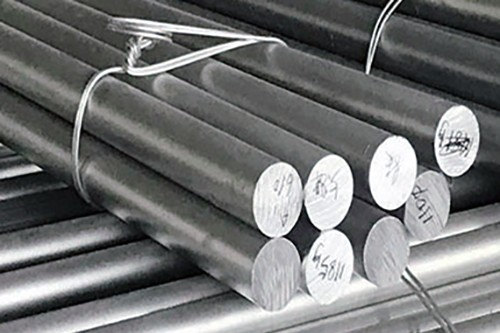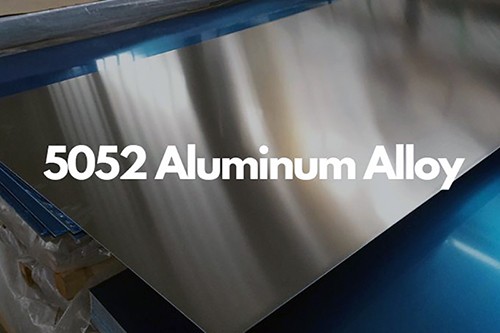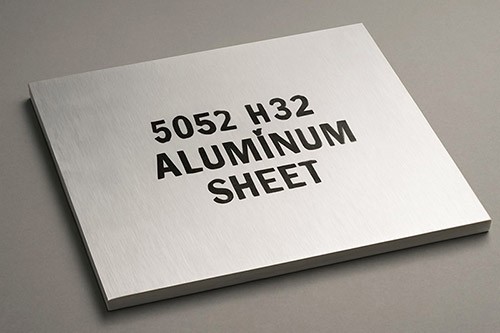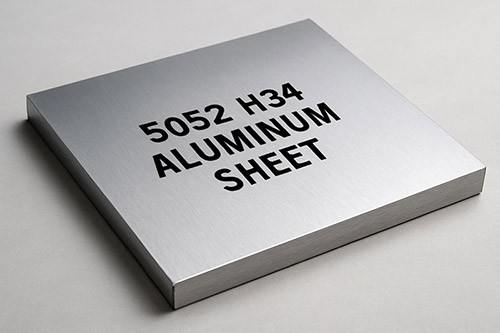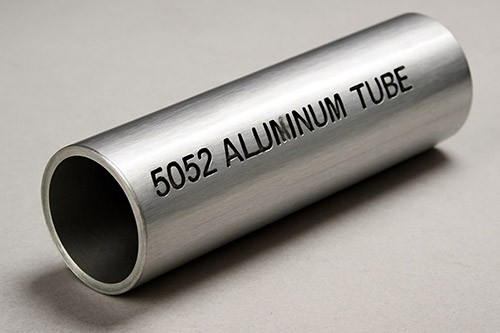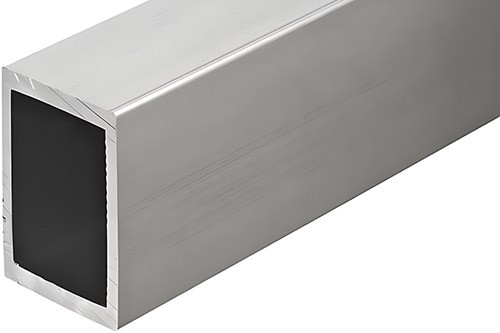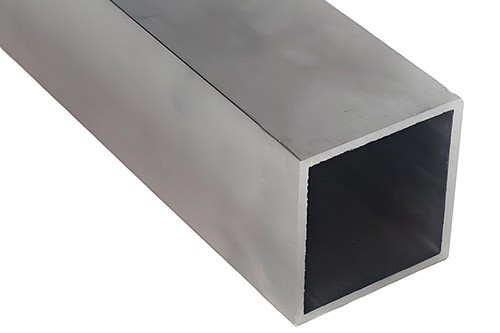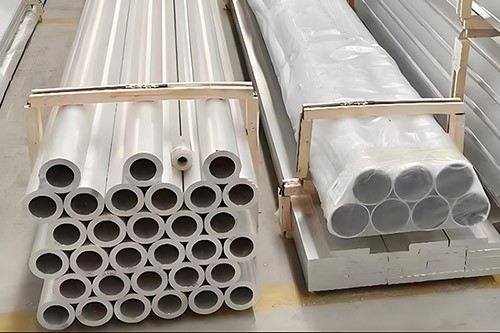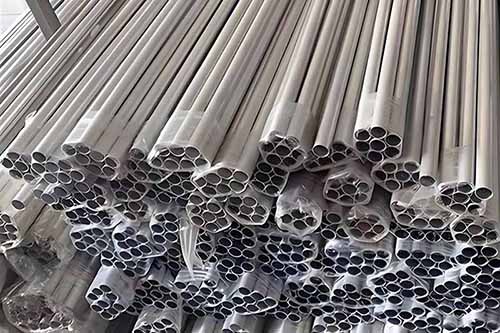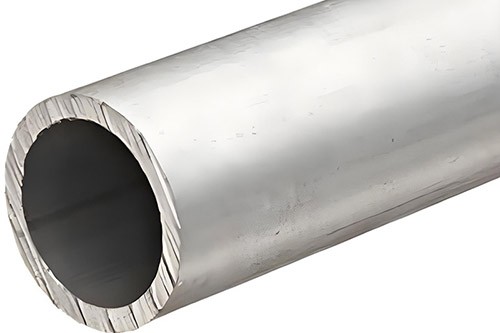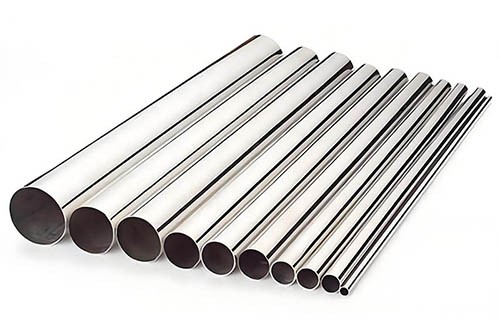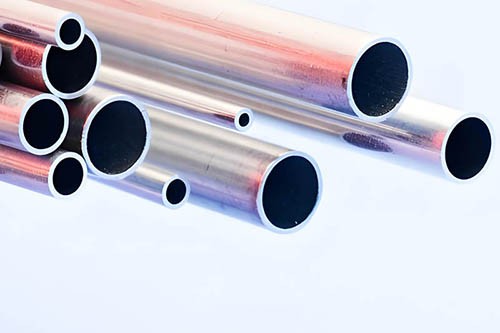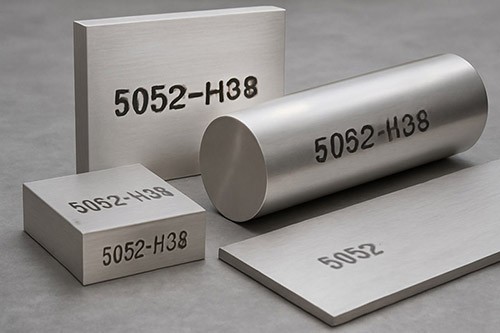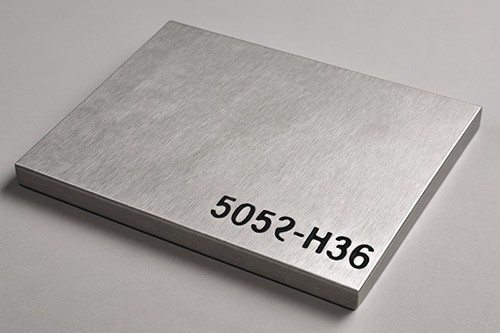5052 Aluminum Angle
5052 Aluminum angle is a structural profile made from 5052 aluminum alloy, which is renowned for its excellent corrosion resistance, particularly in marine environments.
5052 aluminum is a non-heat treatable alloy, primarily composed of magnesium (2.2-2.8%) and chromium (0.15-0.35%), which enhances the aluminum's corrosion resistance, weldability, and fatigue strength.
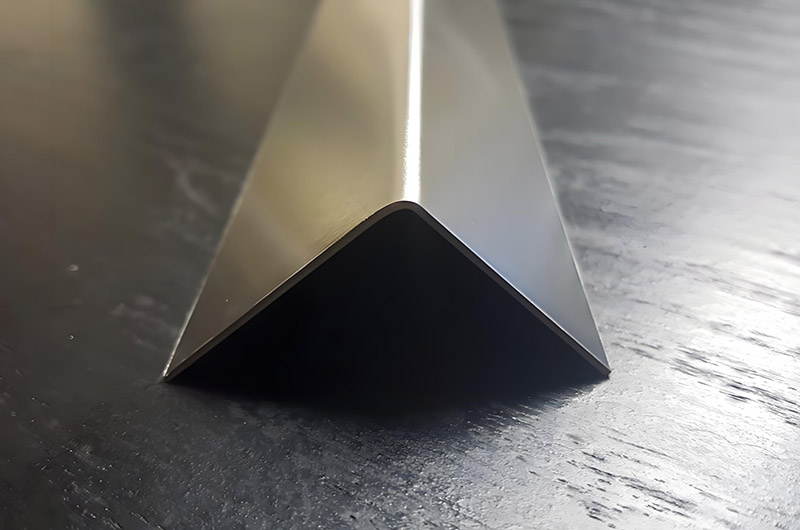
5052 Aluminum Angle Properties
- Strength: Yield strength range from 28, 000 psi (5052-0) to 42, 000 psi (5052-H38), stronger than most other 5xxx series alloys.
- Corrosion Resistance: Exceptional resistance to seawater and atmospheric corrosion, making it an ideal choice for marine and coastal applications.
- Weldability: Excellent weldability, suitable for various welding methods including gas welding, arc welding, and resistance welding.
- Machinability: Medium machinability; not suitable for high-volume machining.
- Formability: Easy to bend, weld, and form using a bending machine, making it ideal for custom profiles with irregular legs, curled edges, or special flange angles.
- Lightweight: Density of 2.68 g/cm³, providing a high strength-to-weight ratio.
5052 Aluminum Angle Tempers and Specifications
Common tempers for 5052 aluminum angle include H32 (strain-hardened and stabilized) and H34/H36 (high-strength variants).
| Temper | Yield Strength (MPa) | Tensile Strength (MPa) | Elongation (%) |
| H32 | 160 | 215–265 | 4–10 |
| H34 | 180 | 235–285 | 3–8 |
| H38 | 220 | ≥270 | 2–4 |
Standards include ASTM B211/B221 (rolled/extruded angles) and ASME SB211/SB221
5052 Aluminum Angle Applications
Applications of 5052 Aluminum Angle in the Marine Industry
Due to its excellent corrosion resistance, especially in saltwater environments, 5052 aluminum alloy is widely used in the marine industry. In particular, 5052 aluminum angle is commonly used in critical parts such as hulls, decks, and railings.
Hull
The hull is the most critical part of maritime transport and must be able to withstand prolonged exposure to saltwater and external environmental corrosion. 5052 aluminum angle is primarily used in support and framework structures in the hull, particularly in areas requiring lightweight and high corrosion resistance. The corrosion-resistant properties of 5052 aluminum effectively reduce salt buildup on the hull surface, extending its service life.
Advantages:
- High Saltwater Resistance: 5052 alloy has a high magnesium content, giving it excellent resistance to seawater corrosion.
- Good Weldability: 5052 alloy can be welded using conventional welding methods, adapting to various shaped components of the hull.
- Good Formability: 5052 alloy is easily processed into angles, plates, or other shapes for use in different parts of the hull.
Deck
The deck of a ship is exposed to intense UV rays, saltwater, and mechanical wear. The application of 5052 aluminum angle in deck structures not only provides the required strength but also effectively resists corrosion, preventing long-term use in marine environments from causing corrosion or deformation.
Advantages:
- Lightweight and High Strength: 5052 aluminum angle is lighter than steel, but strong enough to support the weight of deck components.
- Wear Resistance: The surface of 5052 alloy is highly corrosion-resistant, maintaining its integrity in marine environments for extended periods.
- Low Maintenance Cost: Due to its excellent corrosion resistance, 5052 aluminum angle requires less frequent maintenance, reducing operational costs for vessels.
Railings and Guardrails
The railings and guardrails of ships not only require good structural strength but also need high corrosion resistance to ensure a long service life when exposed to seawater. The use of 5052 aluminum angle in railings and guardrails effectively prevents oxidation and corrosion, providing a strong and safe protective barrier.
Advantages:
- Saltwater and sea breeze corrosion resistance: The corrosion resistance of 5052 alloy is particularly suitable for applications exposed to marine environments, preventing corrosion and fracture of railings due to saltwater or sea breeze exposure.
- Easy surface treatment: 5052 aluminum angles can be anodized, spray-coated, and other surface treatments, further enhancing their corrosion resistance and aesthetic appeal.
- High safety: 5052 aluminum angles have sufficient strength to withstand certain external impacts, ensuring the safety of crew members and passengers.
Offshore Structures
In offshore platforms, floating structures, or other marine facilities, 5052 aluminum angle is also a commonly used material. It is not only used in structural frames but is also widely applied in walkways, exteriors, and other components exposed to harsh marine environments.
Advantages:
- Suitable for harsh environments: 5052 alloy remains stable in extreme conditions such as humidity, salt mist, and ultraviolet rays, without rapidly oxidizing or degrading.
- Lightweight: For offshore platforms that require large-area coverage, the lightweight properties of 5052 aluminum angles help reduce the overall weight of the structure, improving design flexibility and stability.
The application of 5052 aluminum angles in the marine field offers significant advantages, especially in terms of corrosion resistance, strength, and lightweight properties. It provides an ideal material choice for hulls, decks, railings, and offshore structures, extending the service life of these structures and reducing maintenance costs. Its excellent welding performance and forming capabilities also offer more flexibility for engineering design, making it an important base material in the marine industry.
Other Industries Where 5052 Aluminum Angle is Used
- Aerospace: Aircraft fuselage and fuel tanks.
- Transportation: Truck bodies and trailers.
- General Manufacturing: Custom brackets, supports, and housings.
- Automotive: Fuel tanks, chassis components, and lightweight frames.
- Construction: Structural supports, frames, and building components, support beams, and HVAC systems.
- Consumer Goods: Kitchen equipment, signage, and furniture.
Structural Frames
Used in transportation vehicles (such as bodies, chassis), building supports, etc., benefiting from lightweight and corrosion resistance.
Connection and Fastening
As an angle profile, it is suitable for instrument brackets, rivets, hardware products, and other connecting components.
Special Environments
Used for non-primary load-bearing structural components in the aerospace field; used for corrosion-resistant components such as fuel tanks and decks in marine engineering.
Available Forms of 5052 Aluminum Angle
5052 aluminum angles are typically available in various sizes and thicknesses, commonly in the H32 temper, which indicates it has undergone strain hardening and stabilization to improve strength and machinability.
Machining Properties of 5052 Aluminum Angle
Formability
Good plasticity in hot working, with a forging temperature range of 420–475°C, and deformation rate up to 80%; cold stamping performance is better in the annealed state.
Weldability
Suitable for gas welding, arc welding, resistance welding, etc. The weld strength reaches 90%–95% of the base metal; however, tungsten arc welding may result in crystallization cracks.
Cutting and Surface Treatment
Cutting performance is poor in the annealed state but improves after cold working; supports polishing and anodizing to enhance surface gloss and corrosion resistance.
Manufacturing and Customization of 5052 Aluminum Angle
Production Methods:
- Bending: Custom angles of various sizes (up to 120 inches) and surface treatments (e.g., #8 mirror, bright annealed).
- Extrusion: Used to produce standardized L-shaped profiles with uniform cross-sectional areas.
- Custom Options: Edging, flanging, drilling, and surface treatments (anodizing, powder coating).
- Tolerances: Shear cutting (±1/16 inch) and laser cutting (±1/64 inch) ensure precision.
Comparison of 5052 Aluminum Angle with Other Alloys
5052 vs. 6061:
- 5052: Better corrosion resistance and formability; ideal for bending and shipbuilding.
- 6061: Heat treatable, higher tensile strength (up to 310 MPa), preferred for structural engineering.
5052 vs. 6063:
- 5052: Higher fatigue strength; used in load-bearing applications.
- 6063: Higher surface finish quality; better suited for aesthetic extrusion parts.
Purchasing Considerations
- Surface Treatment: Glossy, anodized, or coating options (e.g., PVDF, bright chromate).
- Sizes: Standard size range from 1/2 inch x 1/2 inch to 8 inches x 8 inches, thickness from 0.9 mm to 7 mm.
Recommended for you
-
5052-H32 angle aluminum is an L-shaped structural profile made from 5052 aluminum alloy, which is processed in the H32 temper.
Other content readers are interested in
-
5052 marine grade aluminium checkered tread plate sheet
5052 Marine Grade Aluminum Checkerboard combines superior corrosion resistance, enhanced traction, lightweight construction and versatility, making it ideal for a variety of marine applications where durability and safety are critical.
-
5052 O H112 Marine Grade Aluminum Bar
5052 O H112 Marine Grade Aluminum Rod is a rod made from 5052 aluminum alloy that is fully annealed to improve workability and tempered to provide strength and resistance suitable for marine applications.
-
5052 Marine Grade Aluminum Plate Sheet
In seawater environments, 5052 aluminum alloy has corrosion resistance properties that are unmatched by many other materials.
-
Marine Grade Aluminum Square Bar 5052 5A02
Marine-grade aluminum square bars 5052 and 5A02 are two commonly used aluminum alloy materials in marine and corrosive environments, known for their excellent corrosion resistance and mechanical properties.
-
5052 O H112 Marine Grade Aluminum Hexagon Bar
The 5052 O H112 aluminum alloy hexagonal bar has excellent corrosion resistance, making it suitable for the manufacture of ship components.
-
5052 O H112 Marine Grade Aluminum Round Bars
5052 aluminum round bars have excellent formability and durability, making them widely used in the manufacturing of ship components.
-
The 5052 O aluminum plate has excellent formability, making it suitable for the complex curved structures and cold-formed components of ship hulls.
-
5052 H32 aluminum sheet is known for its excellent fatigue strength, good weldability, and corrosion resistance, making it particularly suitable for marine environments and vehicle manufacturing.
-
As a professional 5052-H34 aluminum sheet manufacturer, we provide high-quality products that meet AMS 4017 and ASTM B209 standards, specifically designed for the marine, automotive, and aerospace industries.
-
5052 Aluminum Tube Marine Applicability: Resistant to seawater corrosion; ideal for use in marine components. Complies with ASTM/AMS standards and is suitable for the shipbuilding and aerospace industries.
-
5052 Aluminum Rectangular Tube
As a representative of the 5000 series aluminum-magnesium alloys, the 5052 aluminum rectangular tube, with its excellent corrosion resistance, moderate strength, and lightweight characteristics, has become a core material in shipbuilding, aerospace, and the automotive industry.
-
The 5052 aluminum square tube is made from 5052 aluminum alloy and is processed into a square tube. It belongs to the Al-Mg series rust-resistant aluminum alloy.
-
5052 aluminum round tubing is made from 5052 aluminum alloy, which is a round tubular material.
-
5052 H32 aluminum tube is a typical Al-Mg series rust-proof aluminum alloy tube, combining the process of work hardening and stabilization treatment.
-
5052 Drawn Aluminum Tubing is a specialized aluminum alloy product that is manufactured using a cold drawing process, in which the aluminum material is pulled through a die to achieve precise dimensions and a smooth surface.
-
5052-O aluminum tube is made from 5052 aluminum alloy and processed through annealing (O-temper) to form the tubing.
-
Seamless 5052 aluminum tubing is a high-performance material, famous for its outstanding corrosion resistance (especially in marine environments) and its suitability for various structural and fluid handling applications.
-
5052-H38 is a strain-hardened aluminum-magnesium alloy, known for its high strength, corrosion resistance, and versatility in industrial applications.
-
5052-H36 aluminum alloy is a high-strength, non-heat treatable material in the 5000 series, offering excellent corrosion resistance, especially in marine environments, while also providing good weldability and medium strength.
Recommended for you
-
5083 is basically used to manufacture ship hulls because of its relatively high strength and good corrosion resistance.
-
6082 has medium strength and good corrosion resistance, while being lightweight, making it an ideal material for manufacturing components of high-speed vessels.
-
5086 aluminum alloy is irreplaceable in hull and deck applications in marine operating environments due to its unique seawater corrosion resistance, excellent low-temperature toughness, and good weldability.
-
5052 marine aluminum alloy is a high-strength, corrosion-resistant, easy-to-process and weld aluminum alloy, which is widely used in the manufacture of ships and marine structures.
-
Marine Grade Flat Aluminum refers to flat, rectangular marine aluminum sheets or strips used in structural components, decks, and other flat surfaces on vessels.
-
Marine-grade angular aluminum is used for reinforcing edges, frames, and supports in marine structures with L-shaped or angled aluminum profiles. It is valued for its structural support and corrosion-resistant properties.
-
Marine Grade T-Type Aluminum Profiles
Marine T aluminum is a type of aluminum profile specifically designed for shipbuilding, primarily used for connecting or reinforcing hull parts at a vertical angle.
-
Marine Grade I-Type Aluminum Profiles
Marine-grade I-beam aluminum: An I-beam or H-beam aluminum profile used in marine applications requiring high strength, typically used in the construction of beams, joists, and structural supports.
-
Marine Grade Aluminum Square Tube
Marine Grade Square Tube: A type of hollow square aluminum profile used in frameworks, railings, and other structural applications where both strength and corrosion resistance are critical.
-
Marine-grade aluminum troughs: A U-shaped or channel profile used in drainage systems, cable management, and structural components in marine environments. They help guide or support materials while resisting corrosion.
-
Marine Grade Aluminum Bulb Flat extrusions
The advantages of Aluminum Bulb Flat Extrusions over other types of extrusions are significant. Compared to traditional extrusions such as angles or flats, bulb flats offer better performance in load distribution and structural reinforcement.
More content of interest to readers
5086 Aluminum vs 5052 5083 vs 5052 Aluminum Sheets A Comprehensive Guide for Marine Uses 5052 Marine Aluminum: How to Improve Its Corrosion Resistance 3003 vs 5052 Marine Grade Sheet Material 5052 aluminum plate thickness standards and selection for shipbuilding 5052 marine-grade aluminum applications and advantages in shipbuilding 5052 and 5083 aluminum characteristics in saltwater Comparison of Marine Aluminum 5052 and 6061 Common marine aluminum plates 5083 5052 Marine grade 5052 checker aluminum plate for ship decks 5052 Marine Aluminum Plate for Yacht Construction 5083 5052 6082 6061 Aluminum sheet metal for boat building Marine grade aluminum 5052 5454 plate for shipbuilding
You might be interested in: Marine Grade Aluminum 5052 5052 aluminum 5052 aluminum sheet 5052 h32 5052 h34 5052 h32 aluminum 5052 aluminum plate 5052 0 aluminum sheet al5052

